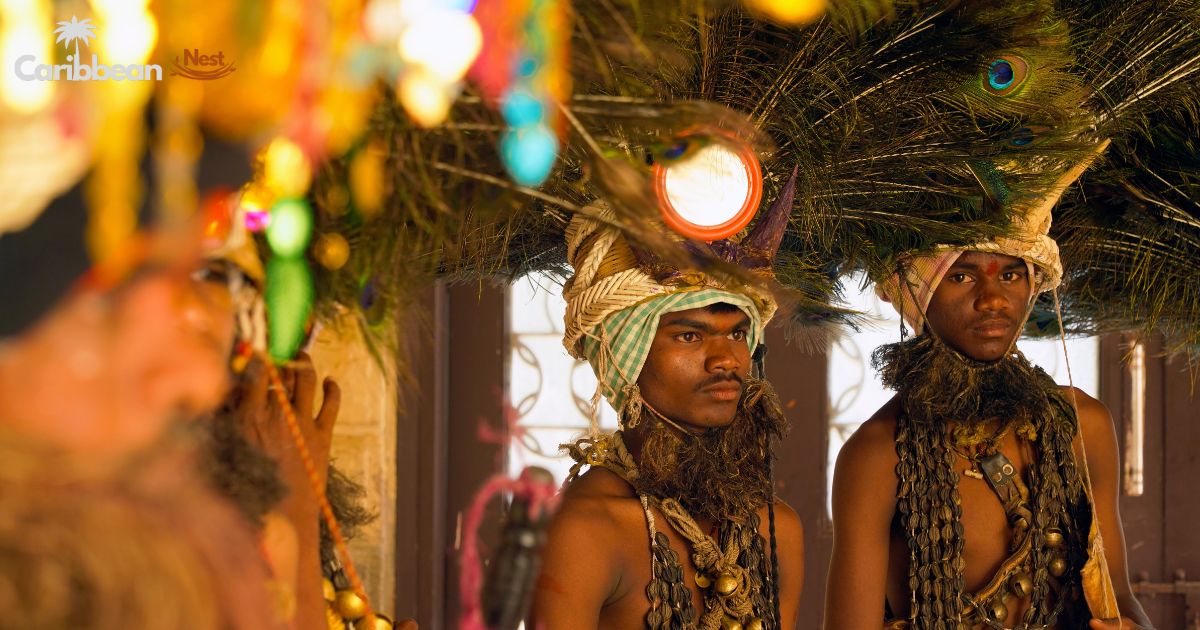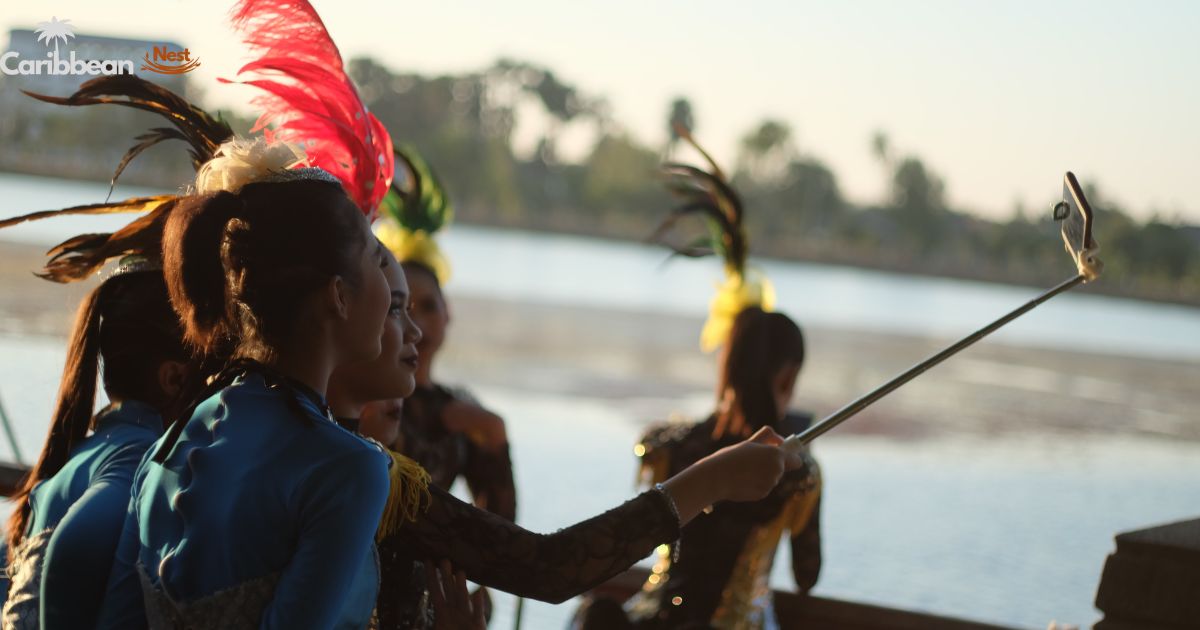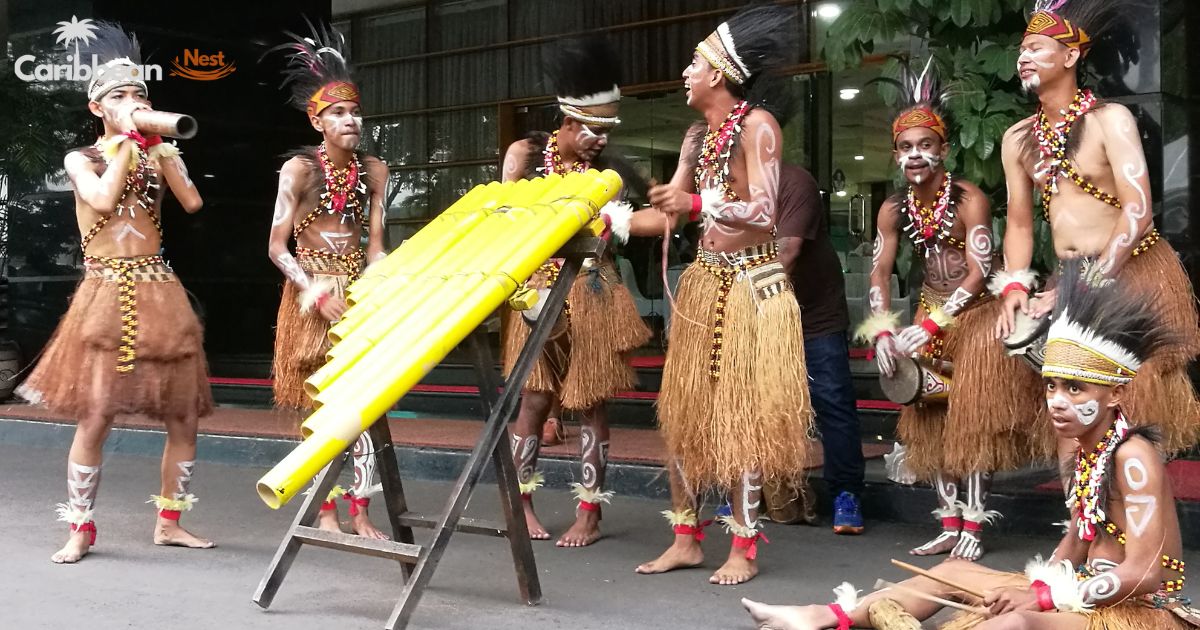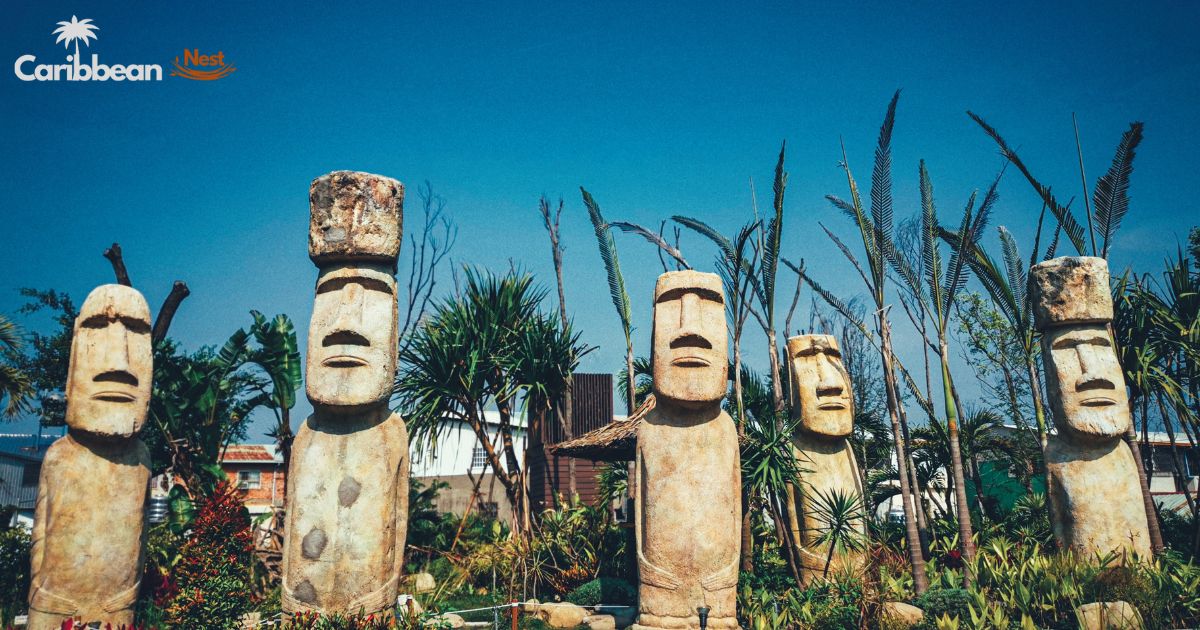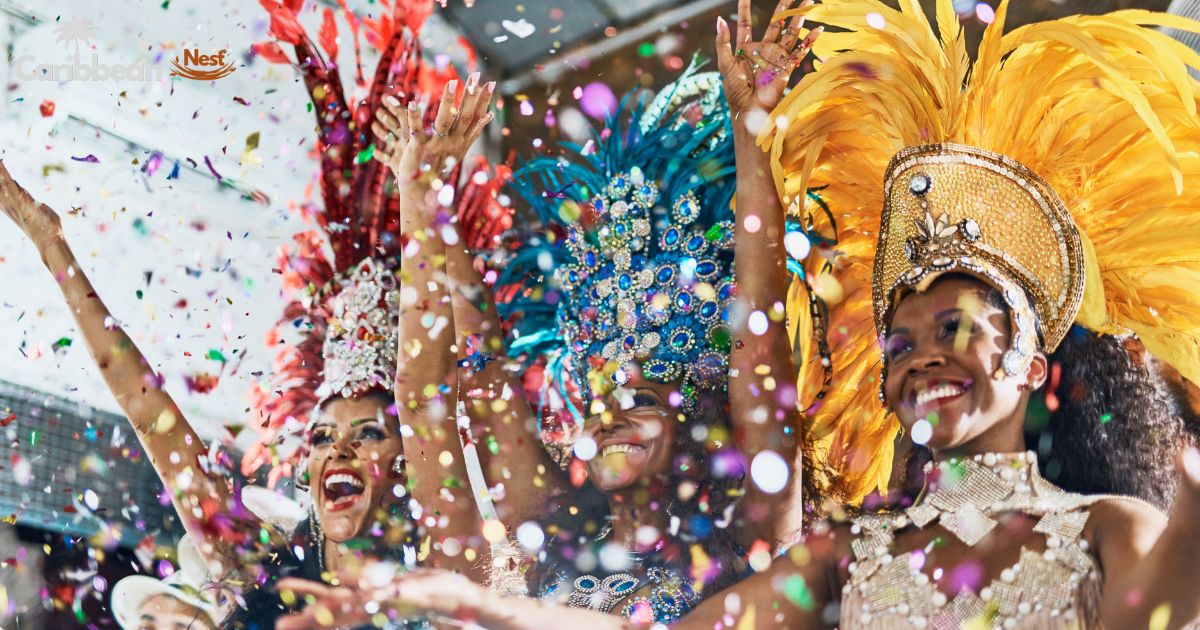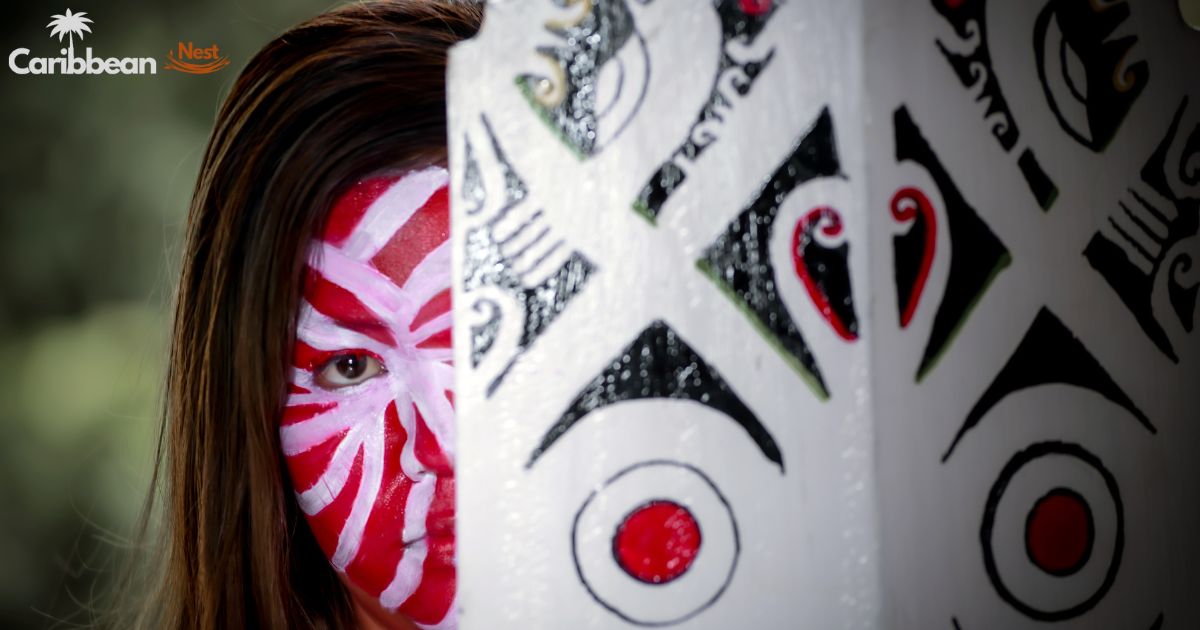Aruba’s history and culture are deeply rooted in a blend of Dutch colonial influence, indigenous traditions, and vibrant modern influences. The island’s multicultural heritage is reflected in its diverse population, which includes people of various ethnic groups and backgrounds. From its early indigenous settlements to the lasting impact of colonial rule, Aruba’s past has shaped its present in unique ways. Today, the island embraces both its rich cultural roots and the opportunities brought by tourism, creating a dynamic identity.
Aruba’s cultural heritage is more than just its beautiful landscapes – it’s a living testament to the island’s dynamic and evolving identity. It is also a place where ethnic groups live together, creating a community that blends old traditions with new ideas. Whether you are interested in Aruba folklore, its tourism industry, or its thriving economic diversification, Aruba offers a wealth of stories waiting to be told.
Aruba’s Indigenous People
Before the Dutch arrived, Aruba’s indigenous people were the Arawak and Caquetio tribes. These early settlers had a deep understanding of the land, with their skills in farming, fishing, and craftsmanship. The indigenous settlements were spread across the island, with communities living in harmony with nature. The Arawak people brought essential practices that still influence the island’s culture, like growing crops and making art from local materials.
The presence of the indigenous people is still felt in Aruba today. For example, many local art forms and pottery patterns can be traced back to these early cultures. Their language, traditions, and beliefs have shaped the island’s identity over time, making them an essential part of Aruban heritage. Their stories, passed down through generations, continue to influence the Caribbean culture of today.
Dutch Colonial Impact on Aruba
In the 17th century, Aruba became a part of the Dutch Leeward Islands under the Dutch West India Company. The arrival of the Dutch marked a significant shift in Aruba’s economy, society, and architecture. The Dutch introduced plantation agriculture, which transformed Aruba’s economy and led to the import of enslaved African people. The slave history is a painful chapter in Aruba’s past, with its effects still visible in the island’s culture and social fabric.
The Dutch colonial influence also shaped the architecture of Aruba. Many buildings reflect the colonial style, which blends Dutch designs with local materials. This unique colonial architecture is still visible today in Aruba’s capital, Oranjestad. It is an essential part of the island’s cultural heritage. The colonial period left lasting marks on Aruba’s people, language, and identity, which continue to influence life on the island.
Aruba’s Rich Heritage
Aruba’s heritage is not only defined by its Dutch colonial history but also by the diverse cultures that have shaped the island over time. The island’s population diversity includes people of African, European, Latin American, and indigenous descent. This blending of cultures creates a multicultural heritage that influences Aruba’s customs, music, and culinary traditions.
Aruba’s rich history and diverse population are reflected in its festivals and celebrations. These events honour the island’s diverse cultures, with local festivals celebrating everything from religious holidays to Aruban folklore. Aruba’s heritage is a beautiful mix of old and new, and it continues to evolve as the island embraces its past while looking forward to the future.
Traditional Folklore of Aruba
Aruba’s folklore is a reflection of its complex history, filled with legends and stories passed down through generations. Tales of spirits, heroes, and magical creatures are an essential part of Aruban culture. One of the most well-known figures in Aruba folklore is “Dera Gai,” a mythical figure said to be the protector of the island’s natural resources. These stories offer insight into the beliefs and traditions that were held sacred by Aruba’s indigenous people.
Today, folklore continues to play a role in Aruba’s cultural preservation. The island’s festivals, music, and dance often incorporate elements of these stories, keeping Aruba’s rich cultural heritage alive. Through these traditions, Aruba maintains a strong connection to its past, allowing both locals and visitors to experience the island’s ancient stories in modern-day celebrations.
The Art Scene in Aruba
Aruba’s art scene is vibrant and diverse, reflecting its multicultural heritage. Local artists often combine traditional themes with modern techniques to create stunning works of art. Whether it’s painting, sculpture, or music, Aruba’s art tells the story of the island’s people and their unique history. The influence of Dutch colonial architecture can be seen in many art forms, as well as the strong connection to nature and indigenous traditions.
Art plays a vital role in Aruba’s tourism industry, as visitors often seek to take home a piece of the island’s culture. Many art galleries and museums showcase works by local artists, helping to preserve Aruba’s artistic heritage for future generations. The island’s art scene is a testament to the creativity and resilience of its people, blending history and modernity in every piece.
Aruba’s Museums and Cultural Sites
Aruba is home to several museums and cultural sites that provide a window into the island’s past. The Aruba Archaeological Museum is one of the best places to learn about the island’s early settlers and their way of life. Here, visitors can view artefacts from indigenous settlements, including pottery, tools, and ancient carvings. These items offer a glimpse into Aruba’s early history and provide valuable insight into the lives of the Arawak and Caquetio tribes.
Another notable site is the Gold Mine Ruins, where visitors can explore the remnants of Aruba’s mining history. Gold mining played a crucial role in shaping the island’s economy, and the ruins serve as a reminder of Aruba’s colonial past. These museums and cultural sites help preserve the island’s history, ensuring that future generations can appreciate and learn from Aruba’s rich heritage.
Celebrating Aruba: Festivals and Events
Aruba is known for its lively local festivals that celebrate the island’s diverse culture. Carnival is the most famous of these, a colourful and energetic event that brings together people from all walks of life. During Carnival, the streets of Aruba come alive with music, dance, and vibrant costumes. This festival is a celebration of Aruba’s Caribbean roots and its multicultural heritage, blending African, European, and indigenous influences.
Other significant festivals include Día de San Juan (St. John’s Day), which is a celebration of Aruba’s Catholic heritage, and the Aloe Vera Festival, celebrating the island’s thriving Aloe Vera industry. These festivals not only provide entertainment but also serve as a way to preserve Aruba’s cultural traditions and share them with the world.
Aruba’s Economic Evolution
Aruba’s economy has undergone significant changes throughout its history. Once reliant on gold mining and oil refining, the island has successfully shifted toward a thriving tourism industry. Today, Aruba is one of the top tourist destinations in the Caribbean, attracting millions of visitors each year. The island’s economic diversification has helped create a stable and growing economy, with tourism being a key driver of growth.
The development of the Aloe Vera industry is another example of how Aruba has diversified its economy. Aloe Vera has become an essential product for the island, with its natural healing properties used in skincare and health products. Aruba’s ability to evolve economically while maintaining its cultural identity is a testament to the resilience and adaptability of its people.
Aruba’s Modern Cultural Identity
Aruba’s modern cultural identity is a reflection of its past and present. While the island embraces global influences, it also stays rooted in its indigenous heritage and colonial history. The island’s people are proud of their diverse ethnic groups, and this cultural richness is celebrated through festivals, art, and music. The Papiamento language, spoken by most locals, is a unique blend of Spanish, Dutch, and African influences, reflecting Aruba’s complex history.
Today, Aruba enjoys a degree of political autonomy, with a government that focuses on maintaining its independence within the Kingdom of the Netherlands. As Aruba moves forward, it continues to preserve its cultural heritage while embracing the modern world. Whether through Aruba’s local festivals or the daily lives of its citizens, the island remains a beautiful blend of old and new.
Conclusion
Aruba’s history, culture, and indigenous heritage are deeply intertwined, creating a unique island that is both ancient and modern. From its indigenous settlements to its Dutch colonial architecture, Aruba’s story is rich, diverse, and ever evolving. Whether you are visiting for the tourism industry, the art scene, or to relax on its beautiful beaches, Aruba’s cultural heritage will leave you with lasting memories.
FAQ’s
1) What is culture in Aruba?
Aruba’s culture is a rich blend of Dutch colonial influence, indigenous traditions, and Caribbean influences, celebrated through art, music, and local festivals.
2) What is the history of Aruba?
Aruba’s history is shaped by indigenous settlements, Dutch colonialism, and its transformation into a thriving tourism industry, blending both native and
foreign influences.
3) What is Aruba famous for?
Aruba is famous for its stunning beaches, year-round tropical climate, vibrant festivals, and rich cultural heritage that mixes Dutch and Caribbean traditions.
4) What background is Aruba?
Aruba has a Dutch colonial history, with roots in indigenous settlements and a strong Caribbean influence that shaped its multicultural heritage and modern identity.
5) What is the main religion in Aruba?
The main religion in Aruba is Christianity, with a significant portion of the population practicing Catholicism, followed by various Protestant denominations.


